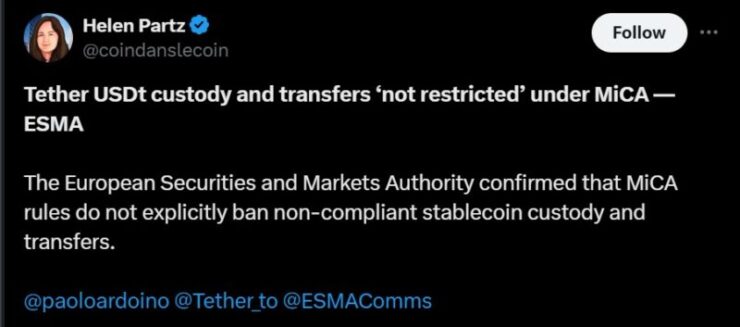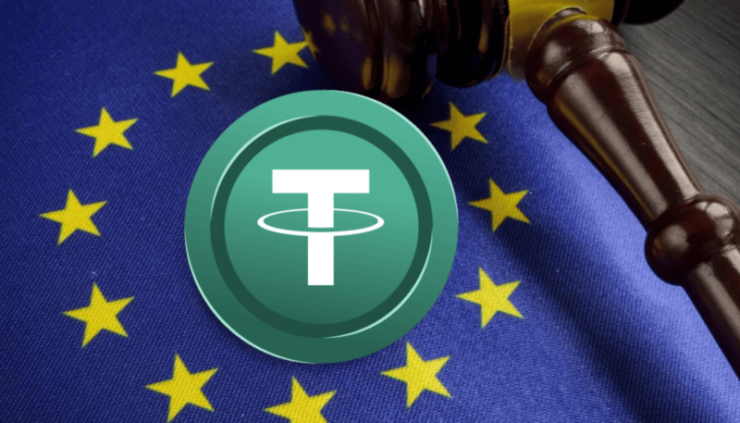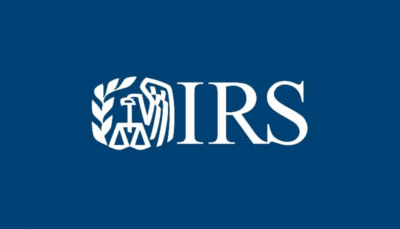The European Securities and Markets Authority (ESMA) has provided clarity on the treatment of non-compliant stablecoins under the Markets in Crypto-Assets Regulation (MiCA). In a recent statement, ESMA confirmed that offering custody and transfer services for stablecoins not adhering to MiCA does not constitute an “offering to the public” or “seeking admission to trading.” Consequently, such services are not explicitly prohibited under MiCA’s Titles III and IV.
Following ESMA’s clarification, Binance, a leading cryptocurrency exchange, announced plans to delist nine non-MiCA-compliant stablecoins, including Tether’s USDt (USDT), for users within the European Economic Area (EEA).
Despite the delisting, Binance will continue to support deposits and withdrawals of these stablecoins until March 31, 2025, allowing users to manage their holdings in compliance with the new regulatory framework.

ESMA’s Guidance for Crypto Asset Service Providers
While acknowledging that deposits and withdrawals of non-compliant stablecoins are permitted, ESMA has urged European crypto asset service providers (CASPs) to prioritize restricting services that facilitate the acquisition of such assets. This aligns with the agency’s guidance issued on January 17, 2025, as part of its broader efforts to regulate the rapidly evolving crypto space.
ESMA’s guidance permits CASPs to maintain “sell-only” services and allow withdrawals of non-MiCA-compliant stablecoins until March 31, 2025, providing a window for investors to divest their holdings.
However, ESMA emphasizes that CASPs must carefully assess whether any of their services could be classified as an “offer to the public” under MiCA, which could trigger compliance requirements.
While the regulatory body has confirmed that custody and transfer of non-compliant stablecoins like USDt (Tether) are not explicitly prohibited, the recent advisory adds more complexities to the efforts involved in navigating MiCA’s rules.
The ambiguity remains about whether non-compliant stablecoins can continue to circulate freely in European markets and what services CASPs can offer without running afoul of MiCA regulations.
This uncertainty is further compounded by broader questions regarding MiCA’s application to emerging sectors, such as tokenized real-world assets and cryptocurrency staking, which are not directly addressed in the regulation.
MiCA Regulation Overview and Impact on Stablecoin Issuance
The Markets in Crypto-Assets (MiCA) Regulation introduced strict new rules aimed at ensuring the stability and security of stablecoins within the European Union. A key requirement under MiCA is that stablecoins must be backed by liquid reserves in a 1:1 ratio, ensuring maximum stability and mitigating risks of devaluation.
This provision is designed to create a secure environment for users and protect the broader financial system from the volatility that has plagued some cryptocurrencies.
MiCA also establishes a cap on the daily transactions of stablecoins that are not tied to the euro, limiting them to 1 million transactions per day. This regulation aims to safeguard the euro’s dominance in the European financial ecosystem while curbing potential disruptions caused by large-scale, non-euro stablecoin usage.
Additionally, the regulation targets algorithmic stablecoins, with proposed legislation moving toward a potential ban within the EU. The concern here stems from the perceived risks associated with algorithmic stablecoins, which use automated mechanisms to maintain their value, potentially leading to instability during periods of market stress.
Quick Facts:
- ESMA confirms that custody and transfer services for non-MiCA-compliant stablecoins are not explicitly prohibited under MiCA.
- Binance plans to delist nine non-compliant stablecoins, including USDT, for EEA users, while maintaining deposit and withdrawal support until March 31, 2025.
- ESMA advises CASPs to evaluate their services to ensure compliance with MiCA, allowing “sell-only” services for non-compliant stablecoins until March 31, 2025.





